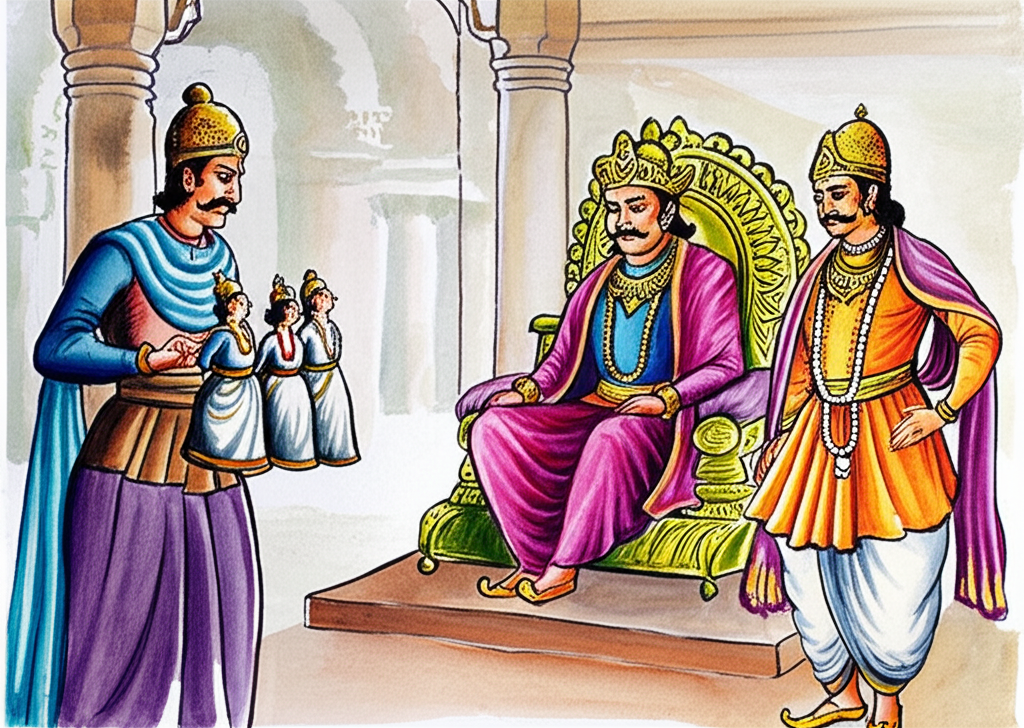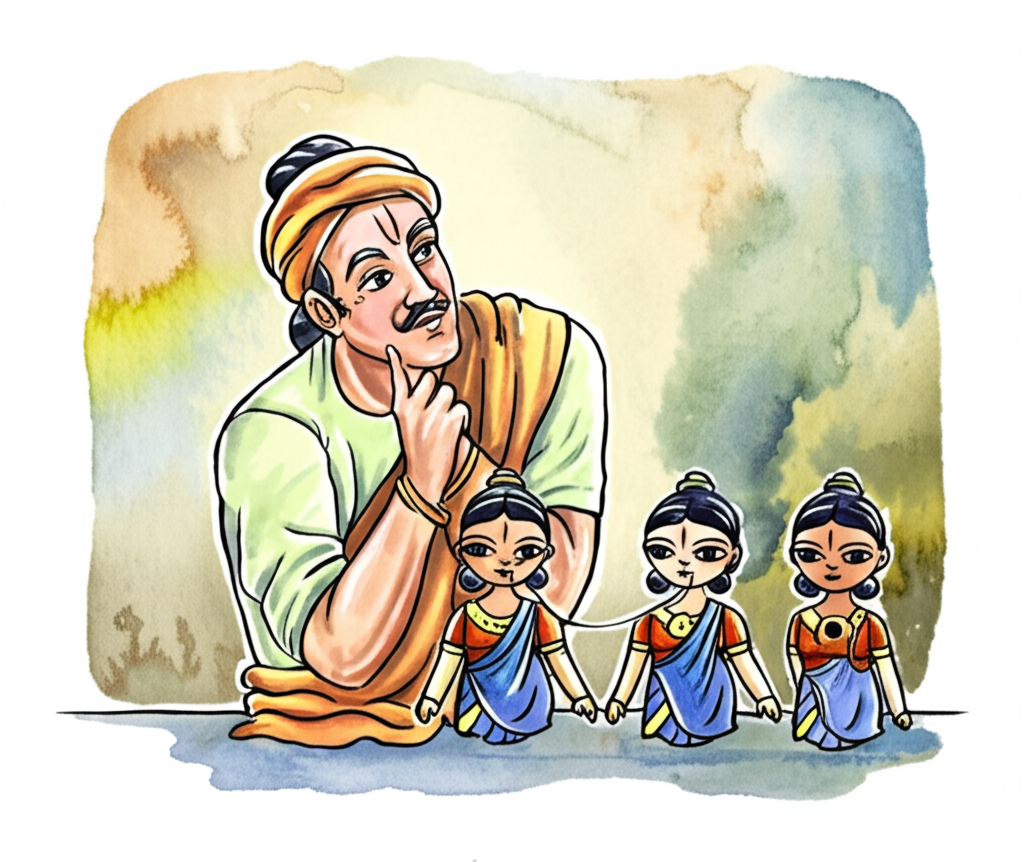
A long time ago, during the reign of King Krishnadevaraya, a merchant from a faraway land visited the Vijayanagara court. He told the king, “I’ve heard tales of your court’s wisdom. I have a test for you!” The king let him continue.
The merchant said, “I have three dolls. They look exactly alike, but they are different. Tell me how they are different. I’ll return in 30 days for your answer!”
The king called his ministers, but nobody knew the answer. Even Tenali Rama, the king’s clever advisor, was puzzled! Tenali Rama asked the king to take the dolls home. He examined them carefully, trying everything he could think of, but time was running out.
When the merchant returned, Tenali Rama stepped forward and said, “I’ve found the difference! One doll is good, one is average, and one is bad!” Everyone was amazed.
“How do you know? Show us!” the king asked.
Tenali Rama showed a tiny hole in each doll’s ear. He then carefully inserted a thin wire into each ear.
In the first doll, the wire went in one ear and came out the mouth. In the second doll, it went in one ear and out the other. In the third doll, the wire went in the ear, but disappeared into the doll’s heart.

“The first doll is bad,” Tenali Rama explained, “because it represents people who can’t keep secrets. The second doll is average; it represents people who are straightforward and don’t understand hidden meanings. The third doll is good; it represents those who can keep secrets!” Everyone was impressed.
Lesson: Curiosity and a willingness to learn are the only ways to expand our experiences and understanding.